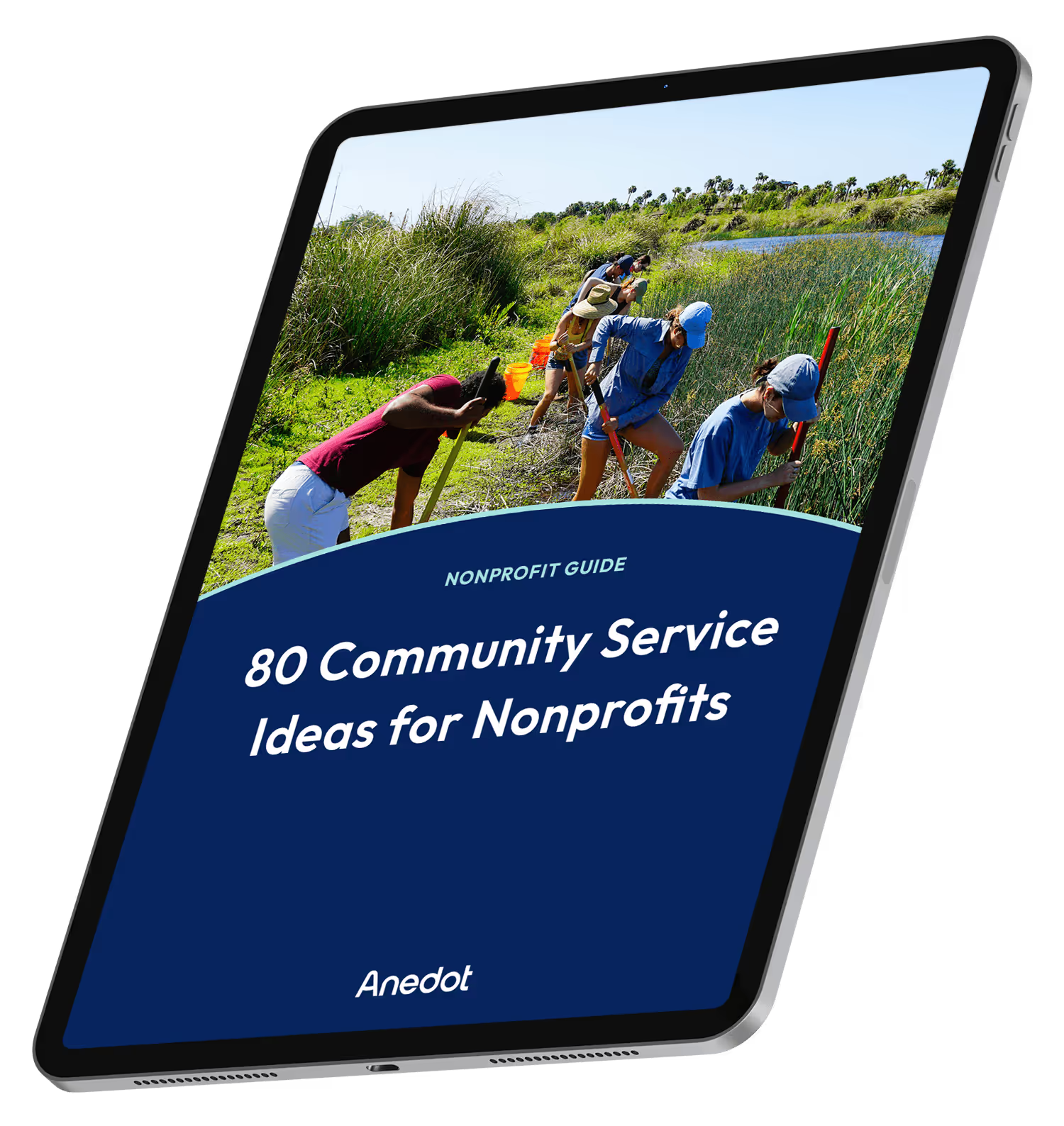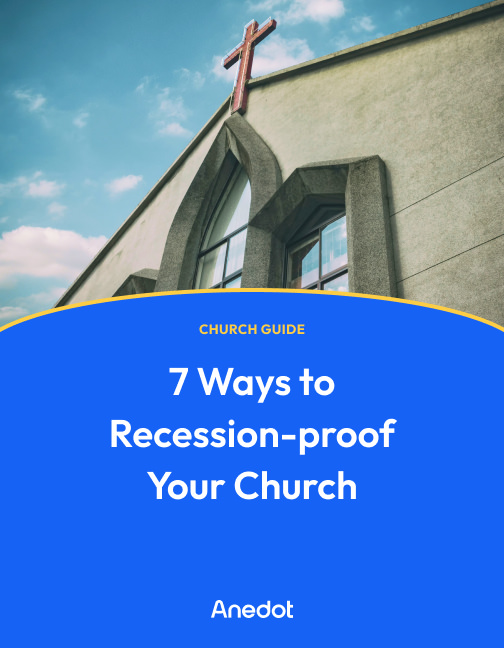It’s no secret that COVID-19 has permanently impacted churches of every size, denomination, and style.
From guidelines for corporate worship, to church giving, to teaching content, the coronavirus pandemic has changed the way pastors lead and members engage their church communities–forever.
The changes haven’t been all bad, however.
While some churches have seen church attendance drop, there has also been a renewed interest in prayer as a result of the pandemic. And many members say that their faith has been strengthened during quarantine and shutdowns.
In any case, church leaders are now shepherding congregations that operate differently now than they did before 2020.
They are more tech-savvy, more comfortable with doing things remotely, and hungrier for purpose and connection. And they may have different ways of spending, giving, and thinking about money.
Church leaders need new strategies for fundraising in 2022 and beyond.
Engaging with members to get them excited about giving takes not only empathy and great communication, but the right technology.
In the following article, we’ll talk about five giving strategies for post-pandemic churches–and how pastors can not only inspire members to be generous, but give them the tools to make generosity simple and easy.
1. Establish credibility

In the wake of the coronavirus pandemic, people might be less likely to trust authority. Even before 2020, only 64% of Americans trusted each other.
Likewise, Americans are less likely to trust pastors.
A new report from Barna reports that only half of all Americans view pastors as a “trustworthy source of wisdom.” That includes one in five Christians who are unsure that pastors are trustworthy.
Credibility is critical for any leader or organization. More than ever, people care about transparency and authenticity when it comes to what they purchase, who they trust for knowledge and insight, and what they commit their money to.
Asking people to give requires your members to trust you.
In 2022, you might need to make an additional effort to establish credibility with your church members. That can include:
- Vulnerability. People value vulnerability, even from the pulpit. Be authentic about how you present yourself, and people will respond with trust.
- Transparency. Unfortunately, church leaders have often acted corruptly with finances. While this may not be an issue at your church, offering clear reports of finances to members can be a helpful way to build trust.
- Technology. People want to feel safe when they give charitable donations. Use a technology that helps them to give securely (such as Anedot).
Finally, connect with people! People will trust you more as a source of wisdom when you’re not only their pastor, but their friend.
2. Offer connection

Even before the pandemic, many people felt lonely and disconnected.
Social isolation for safety reasons made the problem even worse. In fact, according to a report from Harvard, 36% of all Americans feel “serious loneliness.”
Loneliness is epidemic–even among Christians. But the good news is that the church can be a place of connection and community.
And when people feel more connected, they’re more likely to give of their time and resources.
To create intentional space for connection, church leaders can:
- Create ways to connect. Connection doesn’t just have to happen on a Sunday morning after service. With many believers choosing to stream church from home, it’s super important that your members have multiple option for connecting with other members online or in small groups.
- Build a culture of community. Encourage all leaders, pastors, staff, and volunteers to intentionally connect with visitors and existing members. This tends to have a “trickle down” effect that helps your members become better friends and community members.
- Model generosity. One of the hallmarks of awesome community is generosity. Have you ever heard radical stories of church members giving away their cars, writing massive checks, or allowing others to stay in their homes for free? Be that kind of community, and your church members will learn the awesome blessing of being generous.
Relational connection is Biblical. Psalm 68:6 says, “God sets the lonely in families.”
Find ways to make that Scripture come alive in your church, and you’ll see generosity grow.
3. Use technology for church giving

The COVID-19 pandemic accelerated technology adoption by years.
When we were forced to go remote overnight, we suddenly had to use tools that went from “nice to have” to “must have.”
Zoom, digital menus, contactless payments, and digital church became the norm.
In North America, the share of digitized products and services jumped by nearly 20%–representing a 6-year acceleration in months.
Suddenly, contactless, cashless payment became the new norm. More than ever before, people got used to buying things online, punching in credit card info, and storing financial info.
Christians also got used to going to church online. Even people that don’t regularly go to church streamed Sunday morning services.
In fact, one stat reports that 45% of Americans watched a Christian church service online during the pandemic shutdowns.
While many churches have gone back to in-person services and people have started to shop again in brick-and-mortar stores, some things will never be the same. Tech tools are here to stay.
All that being said, offering digital giving is no longer optional for churches. Online giving platforms make it simple, convenient, and efficient to give and receive.
Donors can give via the payment option of their choice, on the platform of their choice (desktop, mobile, tablet). They don’t have to wait until Sunday to make a gift, and they can easily set up a recurring gift.
To learn more about online giving for your church, click here.
4. Explain the vision

COVID-19 showed us that life is fragile.
Having a sense of purpose in the midst of ongoing uncertainty is key–and studies have shown that purpose can even improve mental and physical health.
When people give money to a church, organization, or individual, they want to feel a sense of purpose.
That includes having answers to questions like:
- How is my money going to be used? People want to know how their hard-earned cash is going to be utilized for the Kingdom of God. Will their gifts go towards supporting operations, a specific ministry, or supporting individuals in need?
- Why is generosity important? The Bible talks about the significance and power of generosity throughout the Old and New Testaments. There’s wisdom and blessing in being generous with our resources.
- What does the church need? Be specific about what your church needs to meet operating budget or undertake a new project. Your church members want to know what you need to succeed. They care about you!
Give your church vision for why they should participate in giving.
Explaining the vision of generosity includes specifics on how your church can utilize financial gifts, why generosity is Biblical, and what your church needs to not only survive, but thrive.
5. Shake up the routine

Many Christians are no longer satisfied with the status quo when it comes to church.
People don’t want to show up on a Sunday morning and go through the motions. They want to feel the meaning behind routines.
If you’ve always delivered the giving message in the same way, consider ways to renew old routines with new purpose and vision. Here are a few ideas:
- Bring in a different pastor or church member to talk about generosity.
- Give a call to generosity during a different part of the service.
- Use a video message to talk about the vision for giving.
- Ask church members to consider giving $5 each via text message.
Be creative about shaking up the routine.
What would resonate with your church members? What kinds of tools and technology can you use?
Hearing a similar message in a brand-new way can help inspire churchgoers and bring new growth to generosity.
Recap on church giving strategies

Here’s a quick recap of giving strategies for post-pandemic churches:
- Focus on establishing trust with your church members. More than ever, people need to know you are credible and trustworthy to develop relationship.
- Provide ways to connect inside and outside of the church. That includes being intentional about connecting with people and building a culture of community.
- Use technology to provide new ways to give on mobile and desktop–providing the option to give quickly, conveniently, and remotely.
- Communicate the vision and purpose of generosity. That includes giving specifics on how financial gifts can be used to advance the Kingdom of God.
- Be creative about asking people to give. If you’ve always done it the same way, consider using a new leader, format, or platform for asking people to give.
Giving with Anedot
Anedot makes giving simple and convenient for both churches and donors.
Using Anedot, donors can safely tithe or make a one-time gift online–and even set up recurring gifts to make giving seamless and automatic.
Anedot comes with zero fees, conveniently integrates with other software tools, and provides multiple options for giving.

80 Community Service Ideas for Nonprofits


























